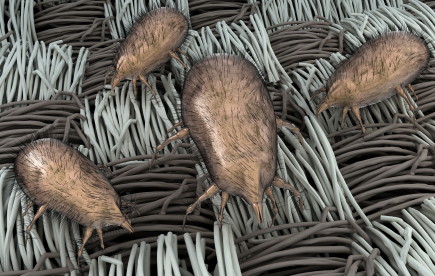
Whether we like it or not we share our home with dust mites. For most people dust mites are harmless since they don’t carry diseases. But some people, especially asthmatics, are allergic to them. It’s important that we learn about these intruders so that we can reduce allergic reactions to them inside our home.
What are dust mites? They are arachnids or bugs related to spiders that are invisible to the naked eye. They primarily live on dead skin cells that we and our pets regularly shed. The average human sheds about 1/3 ounce of dead skin cells every week. You can multiply this times the number of family members to see the volume of skin cells which are sloughed off in your home. Cats and dogs create a lot of dander or dead skin cells as well. All of these dead skin cells provide a banquet for dust mites.
Where do dust mites hang out? Most of the skin cells are concentrated in frequently used furniture, mattresses, and nearby carpeted areas. Probably not what we want to think about, but a typical mattress can contain tens of thousands of dust mites. They prefer warm, moist surroundings such as the inside of a mattress when someone is on it. Ten percent of the weight of a two-year old pillow can be composed of dead dust mites and their droppings.
Some interesting dust mite stats. Almost 100,000 dust mites can live in one square yard of carpet. About 80 percent of the material seen floating in a sunbeam is actually skin cell flakes. A single dust mite produces about 20 waste droppings each day, which contain a protein. It is this protein which triggers allergies for some people. Depending on the person and level of exposure, reactions can range from itchy eyes to asthma attacks. If there is any comfort in thinking about dust mites, unlike other types of mites, house dust mites are not parasites, since they only eat dead tissue.
While we can’t entirely get rid of them, there are things we can do to reduce the allergic reactions they cause some people. This will go a long way toward ensuring healthier indoor air for our family.


